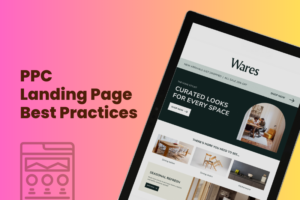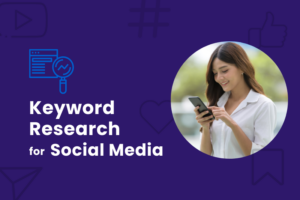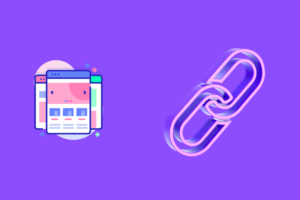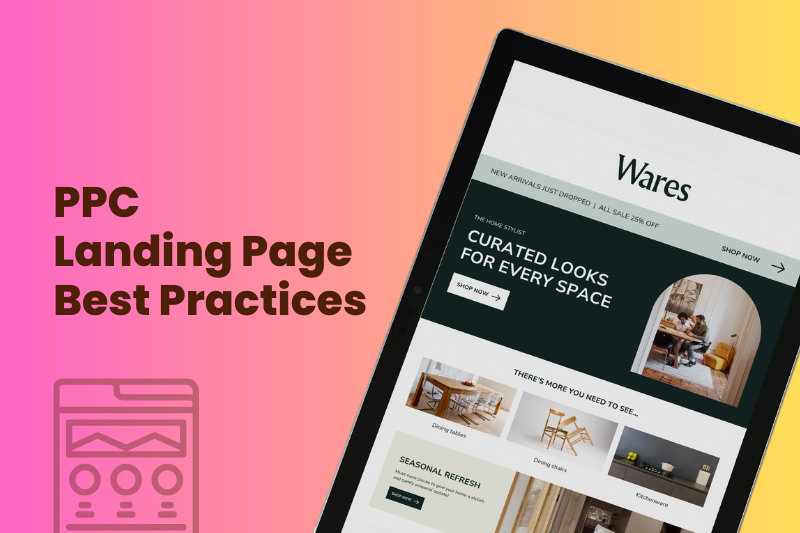Running a PPC campaign can feel exhilarating. You’ve created the perfect ad, targeted the right audience, and watched as people click through. But then comes the letdown—visitors land on your page and… crickets. No conversions.
Frustrating, isn’t it?
This is where your landing page becomes the star of the show. It’s not just where people “land” after clicking your ad—it’s your chance to seal the deal. Think of it as your digital sales pitch: you’ve got seconds to grab their attention and convince them to take action.
In 2025, a great landing page isn’t just about slapping a headline and a button on a page. It’s about creating an experience tailored to your audience’s needs, behaviours, and expectations.
This guide will walk you through six PPC landing page best practices that don’t just look good on paper—they work. Whether you’re a small business owner or a marketer, these tips will help you craft landing pages that drive conversions. Ready? Let’s dive in.
What Makes a PPC Landing Page Effective?
Not all landing pages are created equal. A PPC landing page isn’t just another page on your website; it’s purpose-built to drive action. Here’s what sets an effective PPC landing page apart:
1. It’s Focused on One Goal
A regular website page tries to do too much. It’s designed for browsing, showcasing, and sometimes overwhelming users with options. A landing page, on the other hand, has a singular focus: conversion. Whether you want visitors to sign up for your newsletter, buy a product, or book a demo, everything on the page should drive that one action.
2. It’s Relevant
People click your ad because something resonated with them—maybe it was a special offer, a solution to their problem, or an exciting product. When they land on your page, they expect the same promise to be fulfilled. If your landing page veers off-topic, you’ve lost them.
3. It’s Designed to Convert
Every piece of a landing page—headline, visuals, call-to-action (CTA)—exists for a reason: to guide the visitor toward conversion. Distractions? Clutter? Hard pass.
Keep this in mind as we dive into the best practices. These are the foundations of a landing page that turns clicks into customers.
Best Practice #1 – Simplify and Streamline Your Design
When it comes to landing pages, less is more. A cluttered, overwhelming design makes visitors feel lost. And when people feel lost, they leave.
Here’s how to keep things simple and effective:
1. Prioritise the Essentials
Your landing page doesn’t need 10 different sections or fancy effects. It needs:
- A clear, benefit-driven headline that grabs attention.
- A CTA that stands out and tells visitors exactly what to do.
- A short value proposition that explains what’s in it for them.
2. Get Rid of Clutter
Too much text, random images, or unrelated links can distract visitors. Use whitespace strategically—it gives the page a clean, professional look while drawing attention to what matters.
3. Focus on Speed
If your landing page takes more than three seconds to load, you’re losing visitors. Tools like Google PageSpeed Insights or GTmetrix can help identify what’s slowing you down. Optimise your images, reduce unnecessary scripts, and use caching to improve performance.
4. Mobile is Non-Negotiable
In 2025, over 60% of PPC clicks come from mobile devices. If your landing page isn’t mobile-friendly, you’re leaving money on the table. Make sure:
- Buttons are easy to tap.
- Text is readable without zooming.
- Forms are short and simple to fill out.
Best Practice #2 – Align Ad Copy with Landing Page Content
Imagine clicking an ad for a 50% discount, only to land on a page that doesn’t mention the offer at all. Frustrating, right? This mismatch is a conversion killer.
How to Align Content
1. Mirror the Ad’s Message
- If your ad promises “Free Shipping on Your First Order,” make sure that’s front and centre on your landing page.
- Consistency builds trust and reassures visitors that they’re in the right place.
2. Match Keywords
- Use the same keywords in your ad and landing page copy. For example, if your ad emphasizes “Landing page optimization” or “Boosting PPC conversions,” those phrases should appear prominently on the page.
3. Create a Clear Headline
- Your headline should grab attention and set expectations.
- Example: If your ad says, “Affordable Marketing Tools,” your landing page headline could be, “Marketing Tools That Won’t Break the Bank.”
The goal? Eliminate confusion. Make the transition from ad to landing page seamless.

Best Practice #3 – Use AI and Personalization to Boost Engagement
AI isn’t just for futuristic tech companies—it’s a powerful tool for making landing pages more effective. In 2025, personalisation is key to standing out.
Here’s How AI Can Help
1. Dynamic Content
- Tools like Unbounce or Instapage can personalize your landing page based on the visitor’s location, device, or previous behavior.
- Example: A visitor from Sydney might see, “Exclusive Deals for Sydney Businesses.”
2. Chatbots for Real-Time Support
- AI chatbots like Drift or Tidio can answer visitor questions instantly, keeping them engaged and reducing bounce rates.
- Example: A visitor unsure about your pricing gets immediate clarification, making them more likely to convert.
3. Predictive Analytics
- Tools like Adobe Sensei analyse user data to recommend tweaks that maximise conversions.
AI doesn’t just make your landing page smarter—it makes it feel tailor-made for every visitor.
Best Practice #4 – Create a Step-by-Step Landing Page Framework
Feeling overwhelmed? Don’t worry. Building a high-converting landing page is easier when you break it into steps.
Step 1: Define Your Goal
What action do you want visitors to take?
- Sign up for a free trial?
- Download a guide?
- Buy a product?
Every decision you make—design, copy, CTA—should centre around this goal.
Step 2: Map Out Key Elements
- Headline: Attention-grabbing and benefit focused. Example: “Boost Your Sales with Our PPC Campaign Tips.”
- Hero Image: A relatable, high-quality visual that reinforces your message.
- CTA: Clear and action oriented. Example: “Get Your Free Guide Today.”
Step 3: Test and Refine
Use tools like Hotjar to track how visitors interact with your page. Are they clicking where they should? Are they dropping off?
Step 4: Monitor Performance
Track metrics like bounce rate, click-through rate (CTR), and conversion rates. Use this data to tweak and improve your page over time.
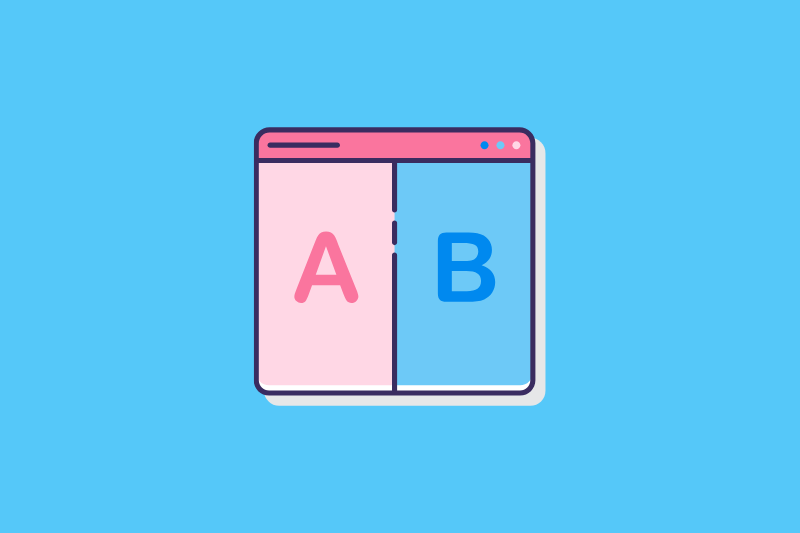
Best Practice #5 – The Science of A/B Testing
A/B testing might sound technical, but it’s one of the most effective ways to optimise your landing page.
How to Get Started:
1. Test One Element at a Time
- Headline variations: “Start Now” vs. “Claim Your Free Trial.”
- CTA colours: Blue vs. Green.
- Images: A product photo vs. a customer testimonial.
2. Use the Right Tools
- Google Optimise for beginners.
- Optimisely for advanced testing.
3. Analyse Results
- Look for statistically significant differences. Even a 1% boost in conversions can make a big impact over time.
Best Practice #6 – Use Visual Storytelling for Engagement
People process visuals faster than text. That’s why a well-designed landing page uses imagery to guide visitors and reinforce the message.
How to Do It Right
1. Create a Visual Flow
- Use bold headlines and strategically placed images to guide visitors’ eyes down the page.
2. Add Interactive Elements
- Think sliders, clickable progress bars, or pricing calculators. These not only engage users but keep them on the page longer.
3. Leverage Video
- A short, engaging explainer video can boost conversions significantly. Keep it under two minutes and focus on how your product or service solves a problem.
Don’t Forget UX Design Principles
- Whitespace makes your page look clean and professional.
- High-contrast colours ensure your CTA stands out.
- Easy-to-read fonts make the page feel approachable.
Conclusion
A PPC landing page isn’t just a digital pit stop—it’s the make-or-break moment of your campaign. By simplifying your design, aligning your ad copy, embracing AI, following a structured framework, testing relentlessly, and using visuals strategically, you’ll create pages that don’t just attract clicks—they convert.
Ready to see results? Start with one of these practices today and watch your PPC campaign performance soar.
Feel like your PPC landing page could use some expert tweaks? Let us help you!


